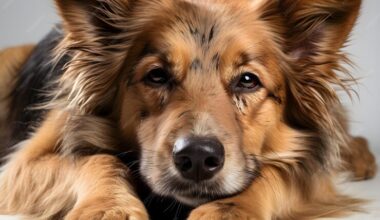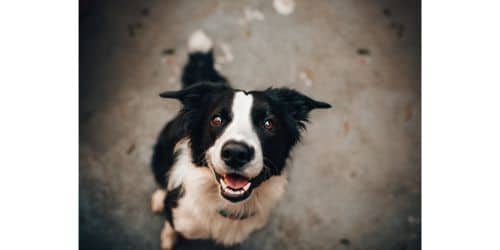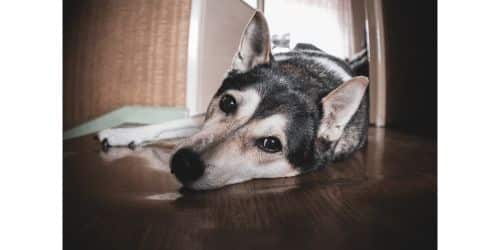Welcome to our blog post about Kennel Nose, a common ailment that affects dogs’ snouts. In this detailed article, we will cover what Kennel Nose is, its causes, and, most importantly, how to avoid this ailment from arising in your furry buddy. Kennel Nose, also known as nasal hyperkeratosis, may be an annoying and uncomfortable disease for dogs, but with the appropriate knowledge and care, you can help keep your dog’s snout healthy and happy.
Understanding Kennel Nose
Kennel nose, also known as nasal hyperkeratosis, is a disorder in which the skin on a dog’s nose gets dry, cracked, and thickens abnormally. It usually affects the nose’s outermost layer, making it hard, crusty, and often discolored. While it can occur in any breed, some dogs, such as boxers, bulldogs, and other breeds with shorter snouts, are more prone to developing Kennel Nose.
Causes of Kennel Nose
Kennel Nose, or nasal hyperkeratosis, can have numerous reasons, ranging from hereditary susceptibility to environmental factors and underlying medical conditions. Understanding the causes of Kennel Nose in dogs will help you take proper measures to prevent or treat the condition.
#1. Genetic Predisposition:
Some dog breeds are more prone to getting Kennel Noses due to their genetic composition. Boxers, bulldogs, pugs, and Boston terriers are among the breeds most typically affected. Their snout structure may make them more prone to nose skin dryness, cracking, and thickening.
#2. Environmental Factors:
Kennel Nose can be exacerbated by inclement weather. Excessive sun, chilly winds, dry air, or high temperatures can all take moisture from your dog’s snout and contribute to the condition’s development. Dogs that spend a lot of time outside, especially if there isn’t enough shade or protection, are more vulnerable.
#3. Nutritional deficiencies:
A diet deficient in key nutrients might harm your dog’s skin, notably the skin on their nose. Inadequate vitamin, mineral, and fatty acid consumption can cause dryness, flakiness, and thickness of the nasal skin. Your dog’s general skin health requires that you provide them with balanced and nutritious food that is suited to their unique needs.
#4. Autoimmune Diseases and Allergies:
Kennel Nose may be more common in dogs who have allergies, autoimmune diseases, or other immune system abnormalities. These disorders can cause dryness, irritation, and abnormal thickness of the nasal skin, as well as impair the regular functioning of the skin.
#5. Chemicals and Irritants:
Irritating substances and chemicals can harm the sensitive skin on your dog’s snout. Certain cleaning chemicals, cleansers, and topical treatments that are not specifically developed for dogs can strip the natural oils from the skin and contribute to the development of Kennel Nose.
#6. Infections and Underlying Medical Conditions:
Kennel Nose may be a subsequent sign of an underlying illness or medical problem in rare situations. Bacterial or fungal infections, autoimmune diseases, hormone imbalances, or other skin-related conditions can all cause nasal hyperkeratosis.
While these factors might all contribute to Kennel Nose, the ailment can also emerge without a clear underlying reason. If you see any Kennel Nose symptoms in your dog, speak with a veterinarian immediately to identify the best course of action and rule out any underlying medical concerns.
Recognizing the Signs and Symptoms
Recognizing the symptoms of Kennel Nose, also known as nasal hyperkeratosis, is critical for early discovery and treatment. By being aware of the symptoms, you can take the appropriate precautions to keep your pet comfortable and safe.
#1. Dryness and Cracking:
Dryness and cracking of the skin on the dog’s nose are some of the key signs of a Kennel Nose. The nose may appear rough, scaly, and dry. You may detect apparent cracks or fissures on the surface of your dog’s snout, which can cause discomfort.
#2. Abnormal Thickening:
The affected portion of the nose may have abnormal skin thickness. It can become hardened or calloused, resulting in a rough and uneven texture on the nose. An increase in the production of keratin, a protein that makes up the skin’s outer layer, is what is causing this thickening.
#3. Discoloration:
The color of the nose might change as a result of Kennel Nose. It may seem lighter or darker than usual, and in some circumstances, the nose’s natural pigmentation may be lost. Discoloration can occur as a result of a combination of skin dryness, cracking, and thickening.
#4. Ulcers or Sores:
Kennel Nose can cause sores or ulcers on the nose in severe cases or when left untreated. These sores can be uncomfortable and cause bleeding or discharge. It is critical to get veterinarian assistance if you see any open wounds or recurring lesions on your dog’s snout.
#5. Itchiness and Irritation:
Kennel Nose can cause discomfort and itchiness on the noses of dogs. They may scratch objects with their claws or rub their snouts against them. This is a reaction to the discomfort that dry, cracked, and thickened skin causes.
#6. Changes in Nose Sensitivity:
Kennel noses can cause changes in nose sensitivity in dogs. When touched or bumped, the affected area may become more sensitive to touch, causing discomfort or suffering. Your dog may show signs of discomfort or withdrawal when you try to examine or touch their nose.
If you notice any of these signs in your dog, you should check with a veterinarian. They can evaluate your dog’s condition, identify the underlying cause of the nasal hyperkeratosis, and propose a suitable treatment strategy to alleviate discomfort and effectively manage the problem.
The need for early care in preventing future issues and maintaining your dog’s snout health cannot be overstated. You can provide the required care and support for your beloved buddy by remaining watchful and proactive.
How to Prevent Dog Kennel Nose
Preventing Kennel Nose, also known as nasal hyperkeratosis, is critical for keeping your dog’s snout healthy. You can reduce their chances of developing this unpleasant condition by taking preventive measures. Here are some proven methods for preventing Kennel Nose in dogs:
#1. Proper Nutrition:
A nutritious and balanced diet is critical for your dog’s general health, including their skin. Make sure that your dog’s meal contains high-quality protein, vital fatty acids, vitamins, and minerals. Consult your veterinarian to identify the optimum diet for your dog’s individual needs and, if necessary, incorporate supplements.
#2. Moisturize the Snout:
Moisturizing your dog’s snout regularly can help keep it hydrated and avoid dryness and cracking. Look for dog-safe moisturizers or balms designed specifically for the nose. These products aid in the retention of moisture and the nourishment of the skin. Because dogs lick their noses, apply the moisturizer gently and make sure it is suitable for consumption.
#3. Safeguard Against Harsh Elements:
Extreme weather might aggravate Kennel Nose. In hot weather, provide cover for your dog to protect their snout from excessive sun exposure. Apply dog-safe sunscreen to the nose area, especially if your dog has light coloring. Consider using a snout balm or protective wax to guard the nose from severe winds and dry air during cold or dry seasons.
#4. Avoid Irritants:
Keep chemicals, irritants, and things that can cause harm or dryness away from your dog’s snout. On their snouts, avoid using products that are not specifically made for dogs. Exercise caution when using cleaning chemicals, topical treatments, or other products in your home that may come into contact with your dog’s nose.
#5. Regular Cleaning and Exfoliation:
Cleaning and exfoliating your dog’s snout regularly can help remove excess dry skin and keep it healthy. To clean the snout, gently wipe it with a soft, damp cloth or use specially-made dog wipes. Avoid using harsh soaps or chemicals that can irritate the skin. Exfoliation can be done with a soft brush created exclusively for dogs or with gentle exfoliating treatments manufactured specifically for dogs.
#6. Hydration:
Make sure your dog always has access to fresh, clean water. Hydration is critical for general skin health, including nose health. Encourage your dog to drink plenty of water throughout the day, particularly in hot weather or after vigorous exertion.
#7. Regular Veterinary Check-ups:
Schedule regular vet visits to monitor your dog’s overall health and handle any potential issues. During these appointments, your veterinarian can inspect your dog’s snout and advise you on preventive measures tailored to your dog’s needs.
#8. Avoid Overexposure to Irritating Substances:
Keep your dog away from things like smoke, strong fumes, and harsh chemicals that can irritate their snout. These irritants might make you feel dry and uncomfortable.
#9. Stress Reduction:
Stress can affect your dog’s immune system and overall health, including their skin. Create a stress-free atmosphere for your dog. Engage in activities encouraging relaxation and mental stimulation, such as regular exercise, playing, and bonding activities.
#10. Regular Grooming:
Regular grooming procedures allow you to evaluate your dog’s snout for any signs of dryness or irregularities. Brushing your dog’s coat helps spread natural oils, which can improve the skin and prevent dryness. Keeping your dog’s facial hair cut can also help to lessen the likelihood of irritants becoming stuck near the snout.
You can dramatically lower the danger of Kennel Nose in your dog by taking these preventive actions. However, if you detect any symptoms or changes in your dog’s nose, you must check with a veterinarian to ensure proper diagnosis and treatment. You can help your furry buddy maintain a healthy, comfortable snout with regular care and attention.
Veterinary Care for Kennel Nose
If your dog gets a severe Kennel Nose or feels discomfort or difficulties, it is crucial to seek veterinary assistance. A veterinarian can assess your dog’s condition, prescribe appropriate therapy, and rule out any underlying medical conditions that may be causing the problem.
Home Treatments and Remedies
While prevention is the ideal strategy, there are several home cures and treatments that can provide relief and aid in the management of Kennel’s Nose. Natural therapies such as moisturizing the snout with coconut oil or shea butter, applying therapeutic balms, or applying vitamin E oil can help soothe and protect the affected region. However, before utilizing any home remedies or treatments, always consult with your veterinarian.
What is a kennel nose?
Kennel Nose, also known as nasal hyperkeratosis, is a disorder affecting the nostrils of dogs. It is distinguished by excessive growth and thickening of the skin on the nose, which results in dryness, cracking, and roughness. The illness is named after dogs who spend much time in kennels or other restricted spaces.
How does the kennel nose develop?
Kennel Nose, also known as nasal hyperkeratosis, is caused by an abnormal deposition of keratin, a protein, on the surface of a dog’s nose. While the precise cause of Kennel Nose is unknown, various factors can contribute to its development:
- Genetic Predisposition
- Environmental Factors
- Nutritional Deficiencies
- Allergies and Autoimmune Disorders
- Irritants and Chemicals
- Infections and Underlying Medical Conditions
It is crucial to note that Kennel Nose can appear without a definite cause. Regular veterinary check-ups, regular grooming, and maintaining a healthy environment for your dog can all help reduce the likelihood of this ailment developing. If you observe any Kennel Nose symptoms, contact a veterinarian to establish the cause and best treatment choices for your dog.
What are the treatments for kennel nose?
Kennel Nose, also known as nasal hyperkeratosis, treatment seeks to ease symptoms, restore moisture to the nose, and preserve the general health of the affected area. Treatment choices will differ depending on the severity of the problem and the underlying reason. Here are some common Kennel Nose treatments:
- Topical Moisturizers
- Softening Agents
- Exfoliation
- Nutritional Supplements
- Medications
- Environmental Modifications
- Regular Veterinary Check-ups
It is crucial to understand that treating Kennel Nose may necessitate patience and persistence. The results may not be immediate, and ongoing care may be required to adequately treat the condition. Consultation with a veterinarian is essential for an accurate diagnosis and treatment plan tailored to your dog’s individual needs.
Conclusion
Kennel Nose, also known as nasal hyperkeratosis, can be a pain for your dog, but with proper prevention, care, and attention, you can keep your dog’s snout healthy and comfortable. You may improve your dog’s snout health by knowing the reasons, detecting the symptoms, and applying preventive actions such as correct diet, moisturizing, guarding from harsh factors, and frequent cleaning.
Remember, if your dog gets serious symptoms or is in prolonged pain, it is critical to seek veterinarian care for a correct diagnosis and treatment. By being proactive and attentive to your dog’s snout health, you can ensure they enjoy a happy and comfortable life free of Kennel Nose.
Related Articles
- The Top 5 Reasons Why Dogs Sit on Their Owners
- What Does It Mean When a Dog Coughs Up Blood?
- Can Dogs Be Gay? Dogs Sexuality Explained
- Allergic Conjunctivitis In Dogs: Causes, Symptoms, and Treatment
- How to Feed a Dog with Giardia






